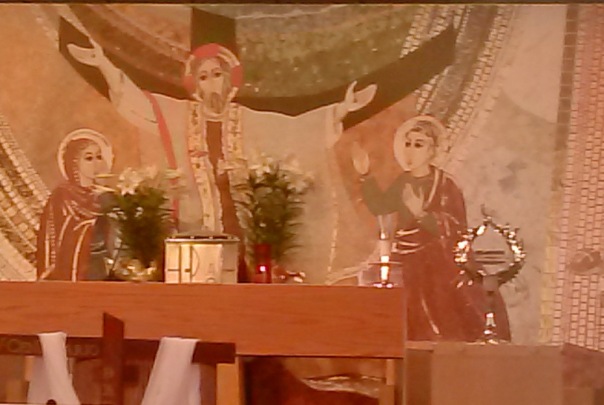Recently, Pope Francis lamented the tendency of Catholics to engage in small talk before Mass when they ought to be spiritually preparing for the liturgy.
This may be related to how the Mass is considered by the faithful. The Council of Trent affirmed the holy sacrifice of the Mass. The spirit of Vatican II considers it a family meal, thus what would be wrong with some pre-supper conversation?
While it is laudable to have pre-liturgical silence to encourage the People of God to prepare for the Liturgies of the Word and the Eucharist, it should be tempered by fostering community.
It is my experience that at least in America, parishes are no longer the tightly knit and stable discreet communities that they once were. Folks typically move around. There are volitional parishes where people choose to attend. People often do not make a day of worship, sticking around for coffee or pot luck.
The infrastructure can also be an issue. My parish's main church was built in the 1850s and has a very small narthex, so there is not a courtyard for people to gather and make small talk before going into the sanctuary. Many modern churches have incorporated a gathering area for such purposes.
So what would be the best way to cultivate more reverence prior to Mass? I would suggest catechesis and clues.
While I want thoughtful exegesis from a homily, it can sometimes be edifying to also have some instruction. I regret that I did not hear more priestly presiders educate the faithful about the change from dynamic translation to static translation of the new Roman Missal in 2011. I sought to educate myself and attended some additional talks which helped me understand the logic of the syntax changes as well as to become accustomed to the "clunky" new sound.
Pope Benedict XVI observed that the essence of liturgy disappears when we applaud in church and it becomes religious entertainment. While the Mass that I frequently attend has a wonderful contemporary choir, it still garners applause "from the crowd" after Mass. Being shepherded by our Holy Father, I curbed my enthusiasm for post-prandial celebration. It would have been instructive if clergy discerned if such a critique was praiseworthy and shared it with their flock.
Another moment where reverence not revelry ought to be instructed is during the "sign of peace". In some liturgies, it becomes a "half time" where people will briefly socialize with their neighbors. Some celebrants campaign, needing to shake the hand of every Catholic "constituent". Liturgically, we are sharing the unity coming from the altar after the fraction rite that comes sharing one body of Christ. So several years ago, the Congregation for the Divine Worship published a piece which discouraged irrational exuberance during the sign of peace. Yet this instruction received nary a mention from the pulpit.
One parish which I attend while visiting relatives has a barn-like sanctuary. Several minutes before they start they dim the lights to get the People of God in the mood. Visually, they are giving them a clue. Where I believe that they go off the right path is that that the will make announcements or or briefly invite secular speakers come up front "before the show".
For me, good liturgy is key. However, community is also important. There is probably not a one-size-fits-all approach. But pastors and sacristans can discern what will work best for their "faith community". And homilists ought not to be afraid to challenge their congregation to prayerfully consider how we comport ourselves in the sanctuary before, during and after our liturgies. And may the clergy not dismiss righteous chaffing from the faithful just because they are in charge.


